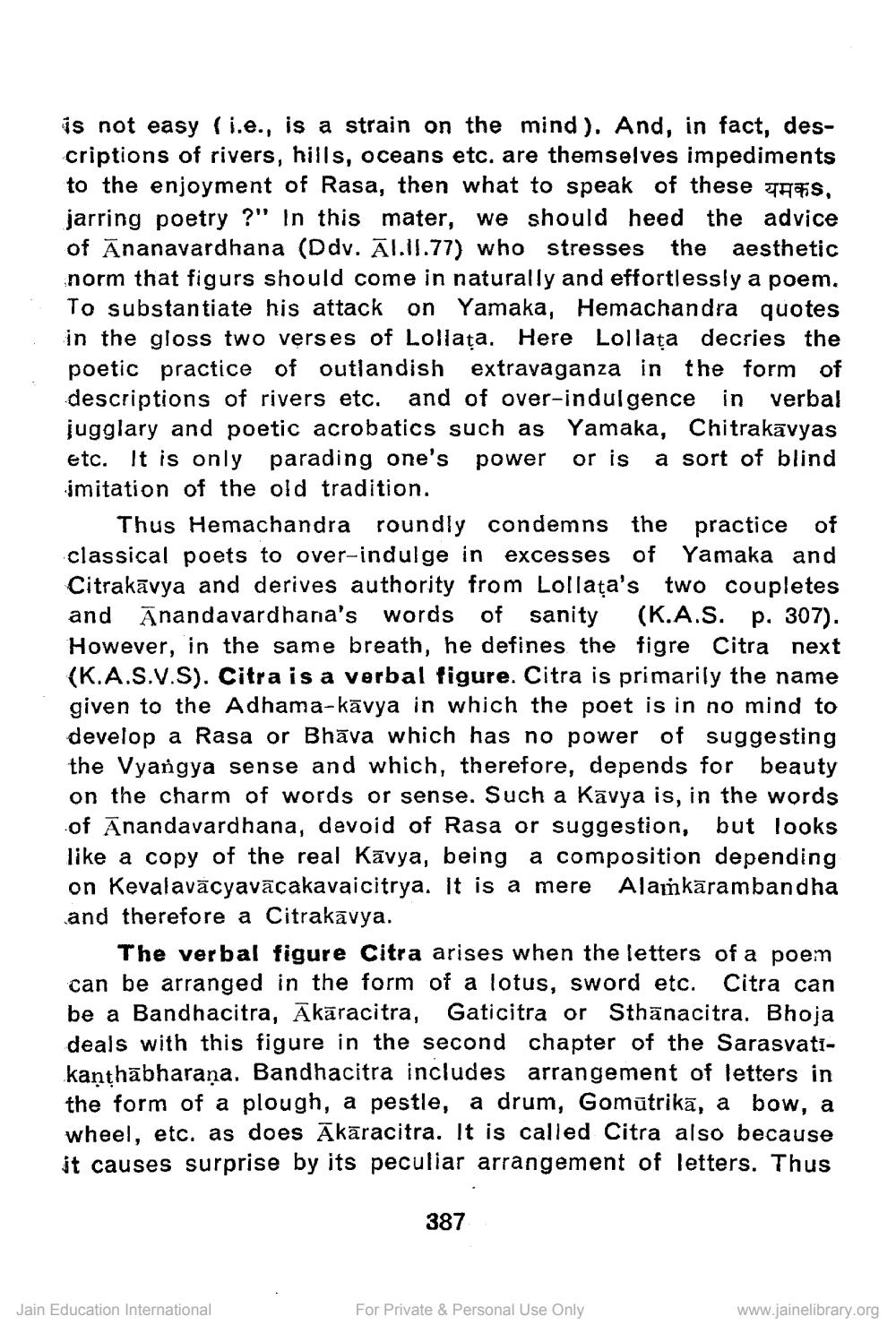________________
is not easy (i.e., is a strain on the mind). And, in fact, descriptions of rivers, hills, oceans etc. are themselves impediments to the enjoyment of Rasa, then what to speak of these ##S, jarring poetry ?" in this mater, we should heed the advice of Ananavardhana (Ddy. Āl.11.77) who stresses the aesthetic norm that figurs should come in naturally and effortlessly a poem. To substantiate his attack on Yamaka, Hemachandra quotes in the gloss two verses of Lollața. Here Lollața decries the poetic practice of outlandish extravaganza in the form of descriptions of rivers etc. and of over-indulgence in verbal jugglary and poetic acrobatics such as Yamaka, Chitrakāvyas etc. It is only parading one's power or is a sort of blind imitation of the old tradition.
Thus Hemachandra roundly condemns the practice of classical poets to over-indulge in excesses of Yamaka and Citrakāvya and derives authority from Lollața's two coupletes and Anandavardhana's words of sanity (K.A.S. p. 307). However, in the same breath, he defines the tigre Citra next (K.A.S.V.S). Citra is a verbal figure. Citra is primarily the name given to the Adhama-kāvya in which the poet is in no mind to develop a Rasa or Bhāva which has no power of suggesting the Vyangya sense and which, therefore, depends for beauty on the charm of words or sense. Such a Kavya is, in the words of Anandavardhana, devoid of Rasa or suggestion, but looks like a copy of the real Kāvya, being a composition depending on kevalavācyavācakavaicitrya. It is a mere Alamkārambandha and therefore a Citrakavya.
The verbal figure Citra arises when the letters of a poem can be arranged in the form of a lotus, sword etc. Citra can be a Bandhacitra, Akāracitra, Gaticitra or Sthānacitra. Bhoja deals with this figure in the second chapter of the Sarasvatikanthābharaṇa. Bandhacitra includes arrangement of letters in the form of a plough, a pestle, a drum, Gomūtrikā, a bow, a wheel, etc, as does Ākāracitra. It is called Citra also because it causes surprise by its peculiar arrangement of letters. Thus
387
Jain Education International
For Private & Personal Use Only
www.jainelibrary.org




